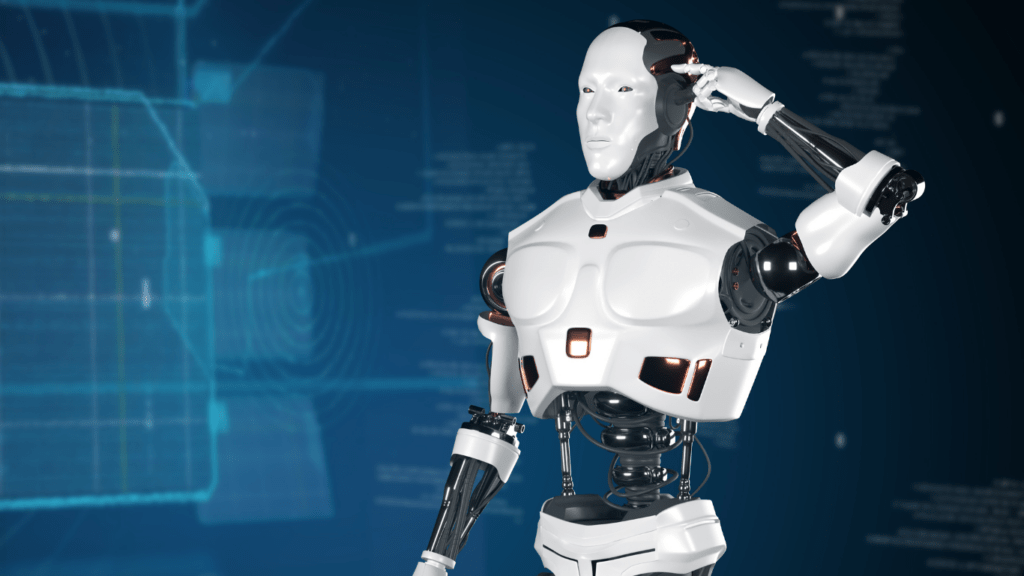Overview of the AI Advancements
The tech giant’s revolutionary AI advancements promise to redefine how industries operate and how users interact with technology.
Breakdown of New Features
Several new features distinguish these advancements:
- Natural Language Processing (NLP) Enhancements: Improved algorithms enable more accurate and nuanced understanding of human language.
- Deep Learning Models: Innovative deep learning models speed up data processing, providing faster insights.
- Enhanced Computer Vision: These improvements make object and facial recognition more precise.
- Edge AI Integration: Allowing AI to process data locally on devices, reducing latency and improving efficiency.
- AI-driven Personalization: Tailored user experiences based on individual preferences and behaviors.
- Healthcare: AI can analyze medical data to improve diagnostics and treatment plans.
- Finance: Enhanced algorithms will streamline fraud detection and risk assessment.
- Retail: Personalized shopping experiences become more accurate and effective.
- Automotive: Autonomous driving systems gain reliability and safety with improved AI.
- Entertainment: Content recommendations, production automation, and audience engagement see transformative improvements.
Comparison to Previous AI Technologies
The tech giant’s latest advancements show significant improvements over earlier AI technologies in various aspects. These advancements pave the way for more sophisticated and efficient systems.
Innovations and Improvements
The new AI technologies differ from previous iterations in several key areas:
- Natural Language Processing (NLP)
- Earlier NLP models struggled with context comprehension. The new models now understand idiomatic expressions and context-specific nuances.
- Enhanced multi-lingual support now enables seamless interactions across various languages, a step up from the limited bilingual capabilities of past technologies.
- Deep Learning Models
- Traditional deep learning models required massive datasets to achieve accuracy. The updated models reduce their dependency on large datasets through transfer learning and few-shot learning techniques.
- Improved unsupervised learning capabilities now identify patterns and make decisions without extensive labeled data.
- Computer Vision
- Previous computer vision systems often failed in low-light conditions or with occluded objects. Advances in image processing algorithms now facilitate accurate object recognition in these challenging scenarios.
- Superior edge detection and feature extraction enable finer detail recognition, surpassing the generalization capabilities of former systems.
- Edge AI Integration
- Earlier edge AI solutions lacked real-time processing efficiency. The latest versions enhance local data processing, reducing latency and improving user experience.
- The introduction of federated learning enhances data privacy by eliminating the need to centralize data for training models.
- AI-driven Personalization
- Traditional AI-driven personalization offered generic recommendations. Advanced algorithms now provide hyper-personalized content by analyzing a broader range of user behaviors and preferences.
- Enhanced adaptive learning continuously refines personalizations based on real-time data, a significant leap from the static models used previously.
Challenges Overcome
The tech giant’s advancements address several persistent challenges in previous AI technologies:
- Data Scarcity
- Previous technologies struggled with limited data availability. New methods such as data augmentation and synthetic data generation effectively mitigate this issue.
- Bias and Fairness
- Earlier AI models often exhibited bias due to skewed training data. The latest advancements incorporate fairness-aware algorithms that ensure balanced treatment across diverse user groups.
- Scalability
- Legacy AI systems faced difficulties in scaling across multiple platforms. The new modular architectures facilitate easier scalability and integration with various systems.
- Energy Efficiency
- High energy consumption was a significant drawback of past deep learning models. Enhanced algorithms and hardware optimizations now ensure more energy-efficient operations without compromising performance.
By introducing these innovations and overcoming these challenges, the tech giant’s new AI technologies set a new standard for the industry.
Implications for Consumers
The tech giant’s revolutionary AI advancements mean significant changes for consumers. These advancements promise to enhance user experience and raise new privacy and security concerns.
Enhancements in User Experience

Revolutionary AI greatly improves user experience. Enhanced NLP enables more accurate, context-aware interactions.
For instance, voice assistants now understand colloquial language and complex queries, making them more intuitive to use.
Deep learning models result in smarter applications with reduced need for extensive data input.
Personalized user recommendations in streaming services and e-commerce platforms are now more precise, providing content and products that closely match individual preferences.
Computer vision advancements lead to better object and facial recognition, improving features like photo tagging and augmented reality (AR) experiences in apps.
Gaming and social media platforms benefit from these improvements, offering more immersive interactions.
Edge AI integration enables real-time processing on devices like smartphones and smart home gadgets.
This results in quicker response times and offline capabilities for AI-driven features, enhancing device usability even without constant internet access.
Privacy and Security Concerns
Revolutionary AI developments introduce new privacy challenges.
Advanced NLP and personalized recommendations often rely on large amounts of personal data. Consumers must navigate the balance between enhanced experiences and data security.
Edge AI processes data locally on devices, which can reduce the amount of sensitive information transmitted over networks.
This could alleviate some privacy concerns, but consumers still need to trust the underlying system’s security.
Consumers face potential risks from increasingly sophisticated AI-driven cyber threats. Deep learning models might be exploited for more convincing phishing attacks and identity theft.
Ensuring robust security protocols and consistent updates are crucial for protecting user data in this advanced AI landscape.
Future Predictions for AI Development
Anticipating AI’s future trajectory involves examining key trends and potential innovations. The tech giant’s recent advancements lay the groundwork for transformative developments in several areas.
- Ethical AI Practices: Companies increasingly focus on ethical AI by developing frameworks to ensure transparency, fairness, and accountability. The tech giant pioneers these practices, setting industry standards that others may follow.
- AI in Healthcare: Advanced AI tools will likely improve diagnostics, personalized treatment plans, and patient outcomes. For example, AI-driven imaging analysis can detect diseases in early stages, enhancing treatment efficacy.
- Autonomous Systems: The tech giant’s progress in edge AI integration paves the way for more sophisticated autonomous systems, such as self-driving cars and drones. These systems benefit industries like logistics, surveillance, and urban planning.
- AI and Cybersecurity: As AI grows more advanced, so do the threats exploiting it. Companies are innovating to counteract these threats through AI-driven cybersecurity measures that identify and mitigate risks in real-time.
- Human-AI Collaboration: Enhanced NLP and deep learning models will facilitate seamless interaction between humans and AI. Workers across sectors will leverage AI for decision-making, creativity, and efficiency improvements, redefining job roles and productivity.
These trends and innovations underscore the tech giant’s pivotal role in shaping AI’s future, influencing sectors ranging from healthcare to autonomous systems while addressing ethical considerations and cybersecurity challenges.


 is the founder of Luck Lounge Land, a platform dedicated to gambling and game theory. Raised in Ironton, Ohio, Ronaldie studied Business Administration and Information Technology at Ohio University. Inspired by a summer internship at a Las Vegas casino, he created Luck Lounge Land to blend his expertise in business and gaming. His website offers news, insights, and interactive features for gambling enthusiasts worldwide.
Ronaldie's innovative approach has made Luck Lounge Land a popular resource for gamblers. He frequently shares his knowledge through articles and webinars. His passion for educating others is evident in the site's 'Game Theory Academy.' Ronaldie's commitment to quality content has attracted a loyal following. He continuously seeks ways to enhance the user experience. Outside of his work, Ronaldie enjoys exploring new casino trends and technologies.
is the founder of Luck Lounge Land, a platform dedicated to gambling and game theory. Raised in Ironton, Ohio, Ronaldie studied Business Administration and Information Technology at Ohio University. Inspired by a summer internship at a Las Vegas casino, he created Luck Lounge Land to blend his expertise in business and gaming. His website offers news, insights, and interactive features for gambling enthusiasts worldwide.
Ronaldie's innovative approach has made Luck Lounge Land a popular resource for gamblers. He frequently shares his knowledge through articles and webinars. His passion for educating others is evident in the site's 'Game Theory Academy.' Ronaldie's commitment to quality content has attracted a loyal following. He continuously seeks ways to enhance the user experience. Outside of his work, Ronaldie enjoys exploring new casino trends and technologies.
